calsfoundation@cals.org
Lake View (Phillips County)
| Latitude and Longitude: | 34º25’00″N 090º48’03″W |
| Elevation: | 174 feet |
| Area: | 5.00 square miles (2020 Census) |
| Population: | 327 (2020 Census) |
| Incorporation Date: | December 2, 1980 |
Historical Population as per the U.S. Census:
|
1810 |
1820 |
1830 |
1840 |
1850 |
1860 |
1870 |
1880 |
1890 |
1900 |
|
– |
– |
– |
– |
– |
– |
– |
– |
– |
– |
|
1910 |
1920 |
1930 |
1940 |
1950 |
1960 |
1970 |
1980 |
1990 |
2000 |
|
– |
– |
– |
– |
– |
– |
– |
609 |
526 |
531 |
|
2010 |
2020 |
|
|
|
|
|
|
|
|
|
443 |
327 |
|
|
|
|
|
|
|
|
Lake View is one of two cities in Arkansas (and one of three incorporated communities in Arkansas) where African Americans make up more than ninety percent of the population. Established during the Great Depression as part of a rural resettlement program, Lake View (or Lakeview) is best known for its part in reshaping education funding in Arkansas through court cases in the 1990s.
When Phillips County was established in 1820, its southern portion was dominated by swamplands and hardwood forests. Near Old Town Lake, an oxbow lake that had once been part of the Mississippi River, some small plantations were established, although they were less prosperous than the region’s larger cotton plantations. After the Civil War, freed slaves continued to work on the plantations as tenant farmers. Levees and drainage projects improved farming prospects, but agriculture remained vulnerable due to weather and economic factors. The Flood of 1927, the Drought of 1930–1931, and a slump in cotton prices in the years before the Depression brought about the foreclosure of plantations in eastern Arkansas, many of which were acquired by the federal government.
The Resettlement Administration—which became part of the Farm Security Administration (FSA) in 1937—claimed much of this federal land and created new farming communities to assist needy farming families. Most of these communities, such as Dyess (Mississippi County) and Lake Dick (Jefferson County), were open only to white farmers, but three communities in Arkansas were reserved for Black farm families. The Lakeview Resettlement Project, officially dedicated in 1938, was one of those three. Consisting of 5,600 acres on the north side of Old Town Lake, the land was divided into ninety-five farms of forty-four acres, each with a farmhouse and barns. The Lakeview Resettlement Project had a general store, a cotton gin, a feed mill, repair shops, and a herd of livestock. A school district was established, with an elementary school, high school, vocational shop, and nursery. Residents participated in a plan that allowed them to purchase their land after a trial rental period. The program was controversial, largely because fourteen tenant families who had lived all their lives on the property were refused permission to remain in the new community on the grounds that they were bad credit risks.
The unincorporated community of Lake View (which was often spelled Lakeview) remained stable but impoverished during and after World War II. State Highways 44 and 85 ran a combined route through the area, and the school and a few small stores remained open. Citizens voted to incorporate as a second-class city in 1980. The spelling of the city name became standardized as Lake View at that time to distinguish it from Lakeview in Baxter County, a resort community on Bull Shoals Lake that had incorporated seven years earlier.
Lawyers representing the Lake View School District filed suit (Lake View School District No. 25 v. Huckabee) against the State of Arkansas in 1992, contending that education funding in the state was unconstitutional because it was both inequitable and inadequate. At that time, schools were still funded largely by local property taxes, with the result that poorer communities like Lake View could not afford to compete with other school districts in teacher pay and other educational expenditures. The case spent years in the courts, going through several stages, resulting in a new wave of school consolidations that included combining the Lake View School District with the Barton-Lexa School District. The high school in Lake View continued to be used by the school district.
Lake View has a public library, a medical clinic, and an office for Mid Delta Community Services. Mail service is through the Wabash (Phillips County) post office. The city is a featured stop on the Delta Heritage Trail.
In 2010, the federal census reported a population of 443 citizens in Lake View, of which 413 were African American. This ratio of Black citizens to total population was exceeded in Arkansas at that time only by the city of Mitchellville (Desha County) and the town of Tollette (Howard County). The total population in 2020 was 327. The Lakeview Resettlement Project Historic District was added to the National Register of Historic Places in 2019.
For additional information:
Otto, John Solomon. The Final Frontiers, 1880–1930: Settling the Southern Bottomlands. Westport, CT: Greenwood Press, 1999.
The WPA Guide to 1930s Arkansas. Lawrence: University Press of Kansas, 1987.
Steven Teske
Butler Center for Arkansas Studies
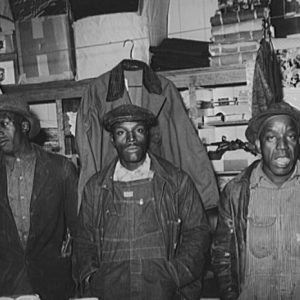 Lakeview Co-op Members
Lakeview Co-op Members 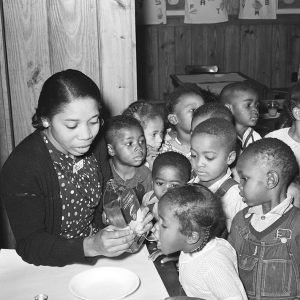 Lakeview Children
Lakeview Children  Lakeview Cooking Lesson
Lakeview Cooking Lesson 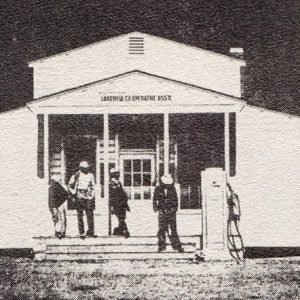 Lakeview Cooperative Association
Lakeview Cooperative Association 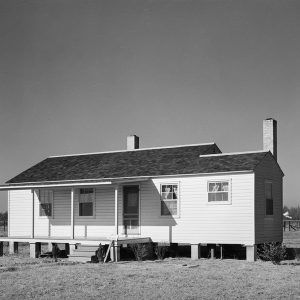 Lakeview House
Lakeview House 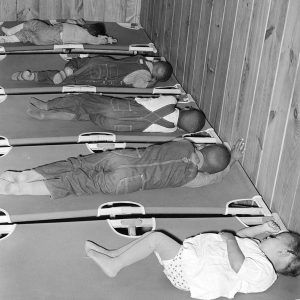 Lakeview Nursery
Lakeview Nursery 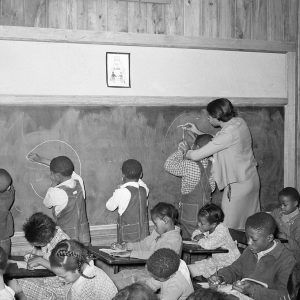 Lakeview Students
Lakeview Students 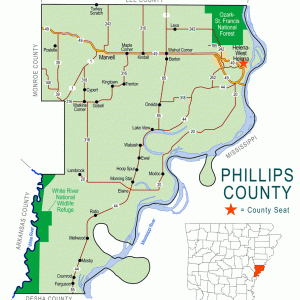 Phillips County Map
Phillips County Map 



Comments
No comments on this entry yet.